7 top tips for growing herbs indoors
Here’s how to grow herbs indoors all year round
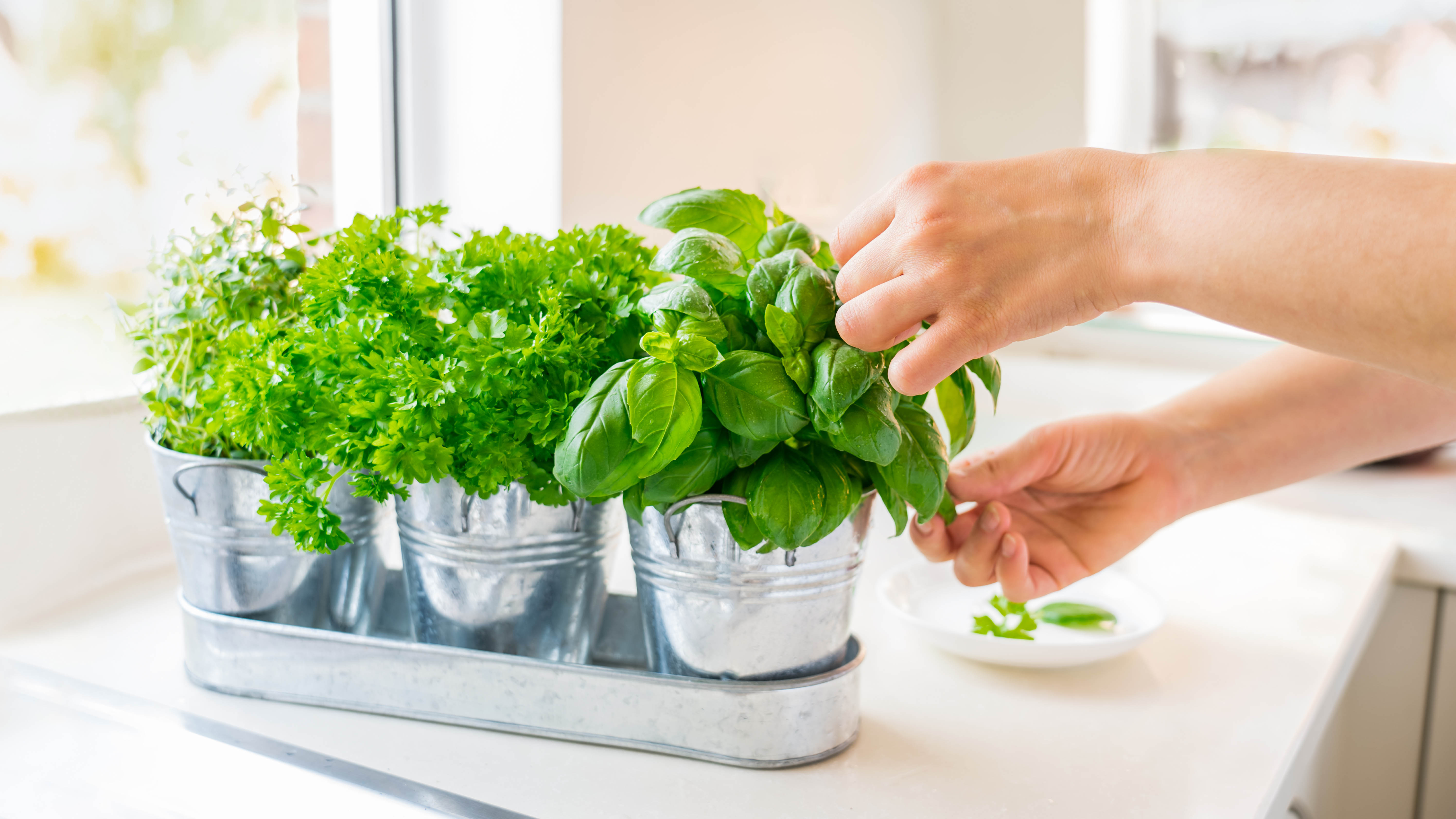
Whether you enjoy cooking with herbs, or fancy the idea of fresh homegrown foods, growing herbs indoors is an excellent start. Not only are these organic and free from chemicals, but can save you money on your grocery bills.
Best of all, herbs can conveniently be plucked from your windowsill, straight into those delicious dishes. And if you’re after aesthetics, indoor herb gardens can make an attractive and vibrant feature in any kitchen.
But if you don’t know where to begin, (or don’t have a green thumb), you’ll need to know these top tips for growing herbs indoors. These basic care tips can make all the difference to the success of your indoor herb garden — just avoid making these common mistakes when growing herbs.
Be it planting herbs from seeds and knowing how to sow seeds the best way or potted plants from the gardening store, be sure to follow these top tips for growing herbs indoors all year round.
1. Choose the right herbs

First of all, pick the best herbs that are more successful for an indoor herb garden. And while it might be tempting to grow all of your favorites at once, not all herbs are low-maintenance or will give you the same results. It’s best to start with only a few types to begin with, so you’ll have a higher chance of success.
Basil, chives, parsley, oregano, rosemary and thyme are all known for being the easiest herbs to grow indoors. In any case, you should always read/follow the herb plant’s label for specific care guidance to ensure you have the right conditions.
2. Ensure pot drainage
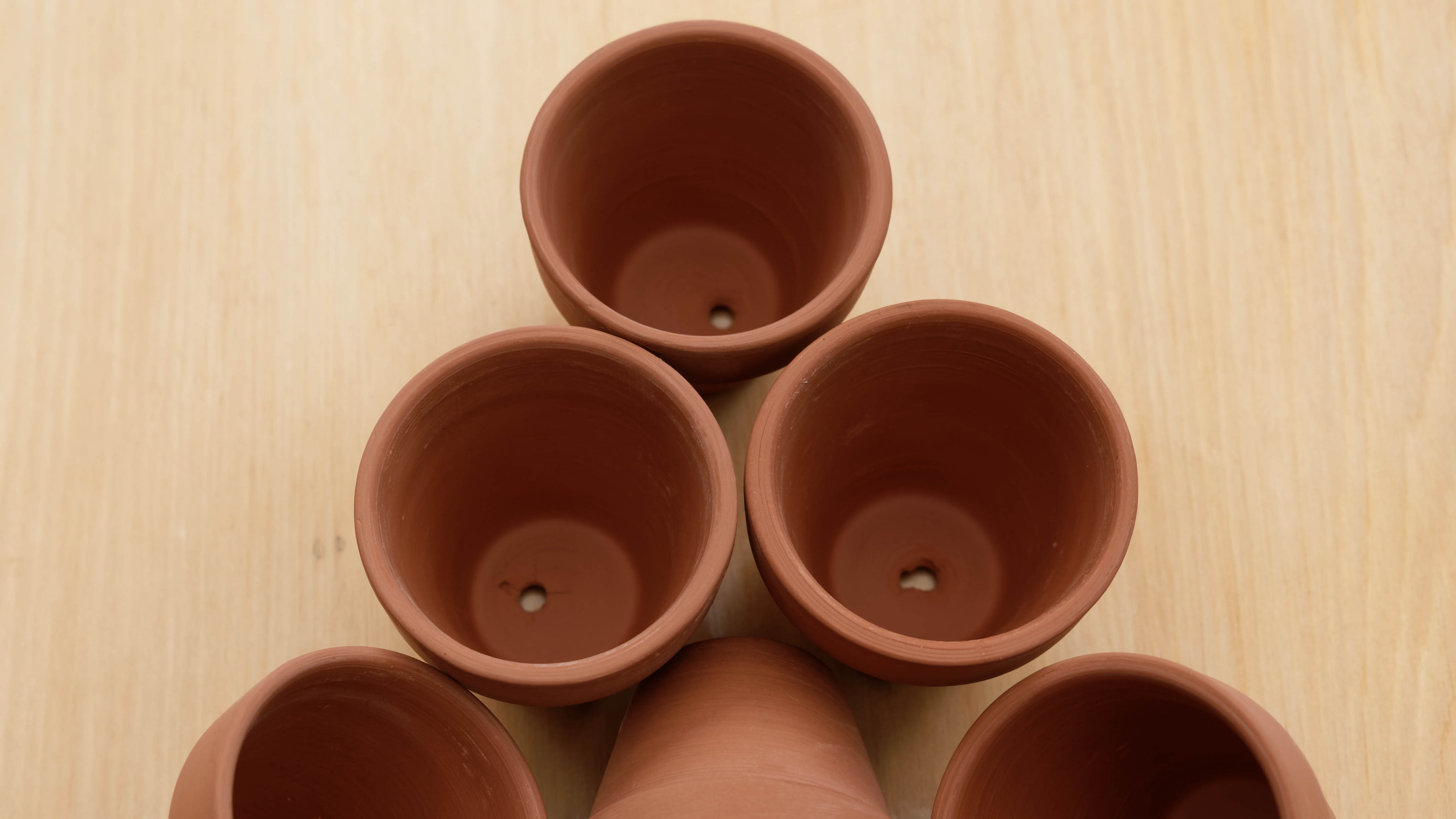
When choosing pots for your herbs, make sure they have sufficient drainage. These should have holes at the bottom to allow excess water to flow through, and prevent your soil from becoming waterlogged. When this happens, this could cause root rot, and wilting fresh herbs.
Get instant access to breaking news, the hottest reviews, great deals and helpful tips.
The same applies for overwatering your herbs. Experts recommend the best way to water your herbs is to place them in the sink, water the soil and leave to drain fully. This allows the roots to be properly watered, without it having to sit in water at the bottom of a pot. Then, place herbs on a saucer to prevent messy spills on your windowsill or chosen space.
In addition, it’s important to get the right type of container or pot. Typically, herbs do better when grown in terra-cotta pots as these are porous materials, and more breathable for herbs. On the other hand, plastic or glazed ceramic pots tend to hold more moisture, which may cause root rot or fungi.
3. Water herbs sparingly

Generally, herbs only need watering once or twice a week, although more or less might be needed depending on the variety, or during warmer temperatures. Herbs such as oregano, rosemary, sage and thyme won’t require much watering, while basil, cilantro, mint and parsley need frequent watering.
A good tip to determine when your herbs need to be watered is to insert the top inch of your finger into the soil. If the soil is bone dry, it’s in need of watering, and if moist, then you can hold off for a day or two.
However, if in doubt, (or you don’t want to get your hands dirty!), you can always invest in a soil moisture meter like this XLUX Long Probe Deep Use Soil Moisture Meter ($14, Amazon), that will do all the hard work for you.
4. Let there be light

Most herbs require a lot of sunlight to thrive. Preferably a minimum of six hours a day, although some types can cope well with less than six. However, it’s recommended to place your indoor herb garden on a sunny, south-facing windowsill. This is usually the best place to provide full sunlight, while east or west facing spots will provide partial shade. North-facing windows will offer the most shade, which is ideal for shade-loving plants.
If your kitchen lacks windows or adequate light for growing herbs, you could supplement natural light with an LED grow light. Lamps such as this GrowLED LED Umbrella Plant Grow Light ($15, Amazon), will give your herbs a total of up to 24 hours of light if required.
To encourage more growth, a good tip is to give your herbs a quarter-clockwise turn once a week to ensure all sides of the plant are getting sunlight.
5. Maintain a right temperature
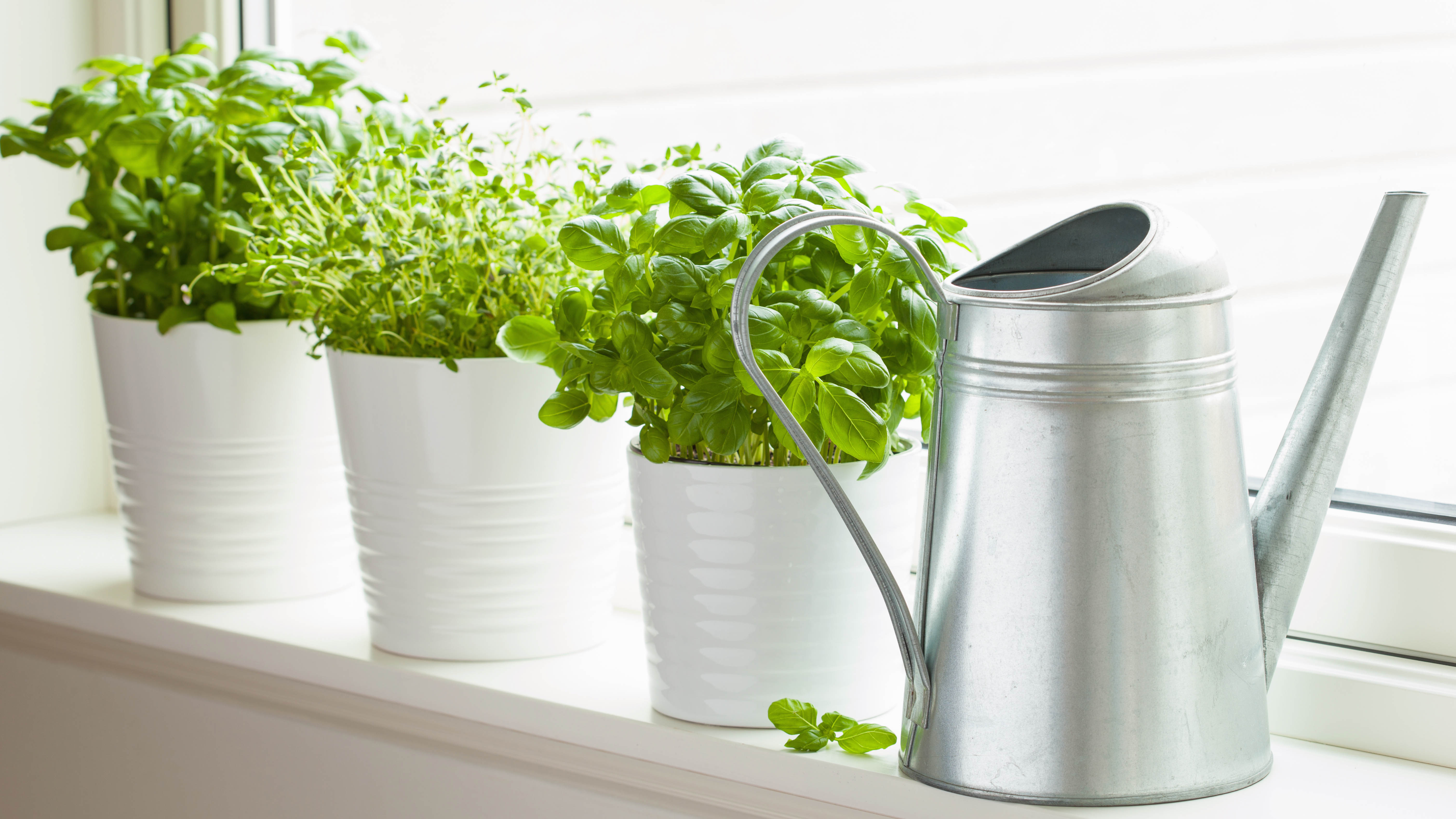
Generally, herbs tend to thrive well in temperatures of at least 65 to 75°F. Of course, this might fluctuate during colder months, and it’s recommended to prevent the leaves of your herb plants from touching windows during winter.
And while most herbs can cope well even if temperatures drop below 50s, a few varieties cannot. Basil, for instance, is sensitive to cold temperatures and may not survive. In this case, try to keep sensitive varieties in a warmer spot in the home, that stays about 70°F if possible.
In addition, ensure your indoor herb garden isn't affected by cold air or drafts from windows or doors during winter.
6. Keep away from artificial air
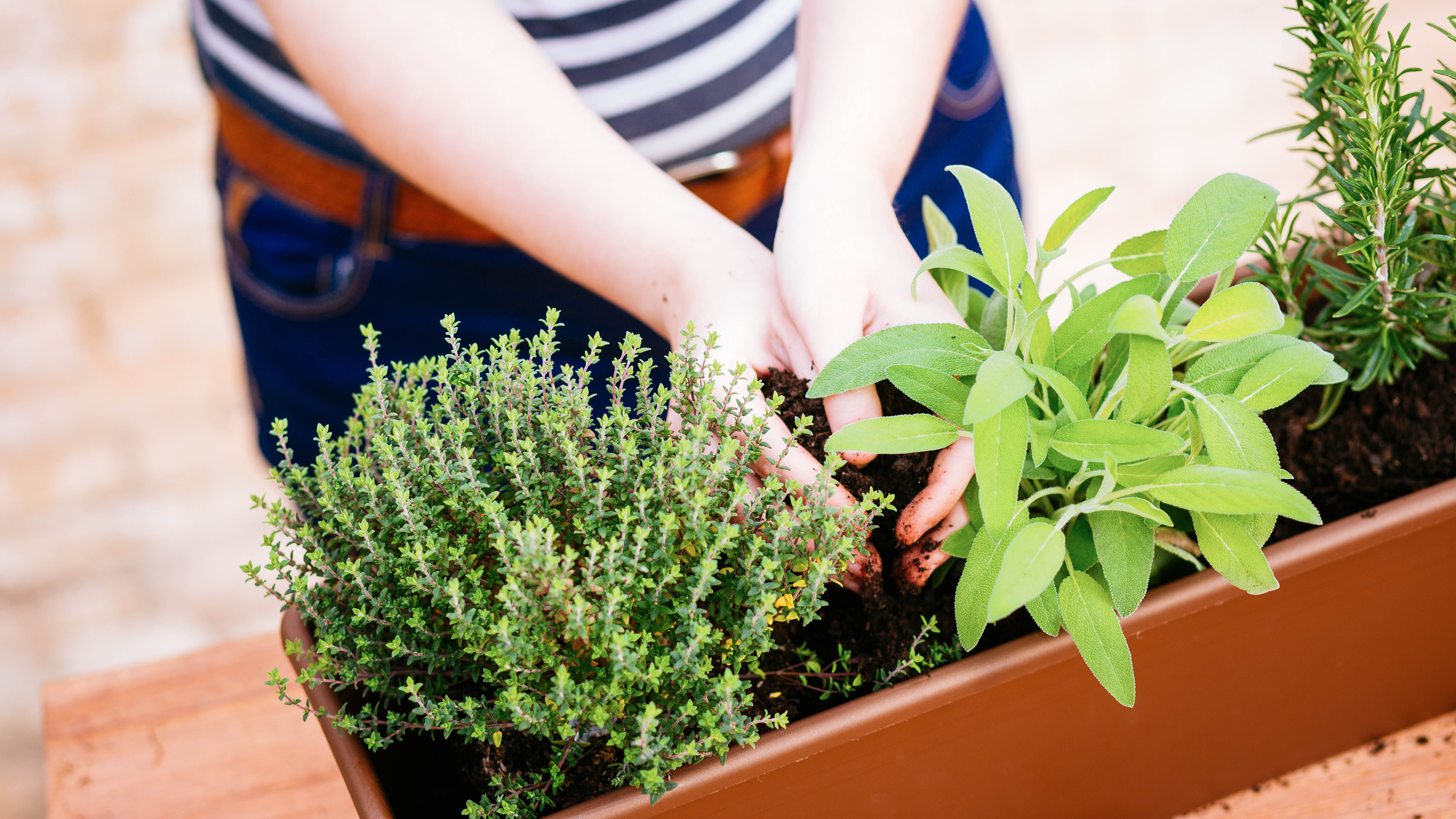
Similarly, keep your indoor herb garden away from artificial sources of air. Whether it be dry heat coming from vents, space heaters or radiators, to the cooler air coming from the AC — these temperatures can affect the growth and condition of your fresh herbs.
Such dry and cold air can literally suck out the moisture needed for herbs to thrive, which can rapidly dry out or wilt. Ensure you place your herb garden away from such extreme temperature sources, and maintain the right conditions.
7. Don’t forget to prune herbs
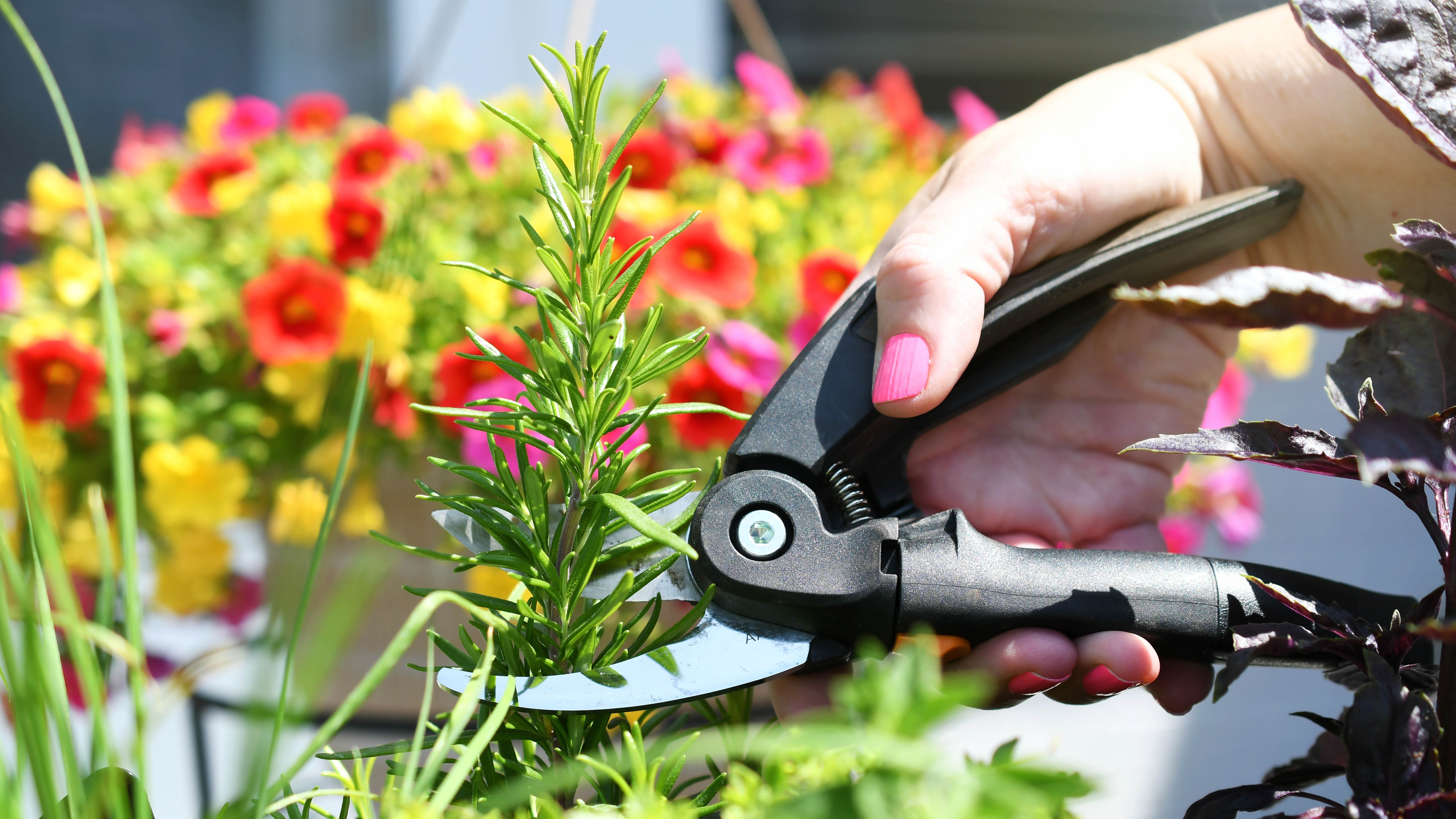
Although you might enjoy seeing bountiful growth, pruning is essential when it comes to growing herbs. Not only does it keep invasive herbs neat and tidy — such as mint or sage — but will encourage new growth and promote better air circulation for plants.
For woody herbs, like thyme or rosemary, simply take a pair of your best pruning shears and cut diagonally from just above a leaf node — cutting at this angle prevents water from standing on the stem, which can result in disease. And for leafy herbs like mint or coriander, you can simply pinch the tips you want to remove from just above the leaf nodes.
Ideally, the majority of pruning should be done during spring, or once it’s finished flowering, but you can still trim away stems intermittently. More importantly, this will guarantee fresh herbs to enjoy all year round.
More from Tom's Guide
- Here are 5 easy ways to grow a vertical garden
- And 7 best vegetables to grow indoors
- Just beware of these 7 mistakes to avoid when growing vegetables

As the Homes Content Editor, Cynthia Lawrence covers all things homes, interior decorating, and garden-related. She has a wealth of editorial experience testing the latest, ‘must-have’ home appliances, writing buying guides and the handy ‘how to’ features.
Her work has been published in various titles including, T3, Top Ten Reviews, Ideal Home, Real Homes, Livingetc. and House Beautiful, amongst many.
With a rather unhealthy obsession for all things homes and interiors, she also has an interior design blog for style inspiration and savvy storage solutions (get rid of that clutter!). When she’s not testing cool products, she’ll be searching online for more decor ideas to spruce up her family home or looking for a great bargain!
